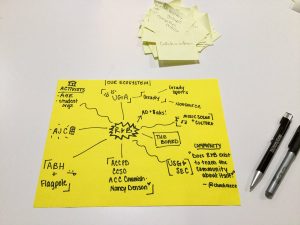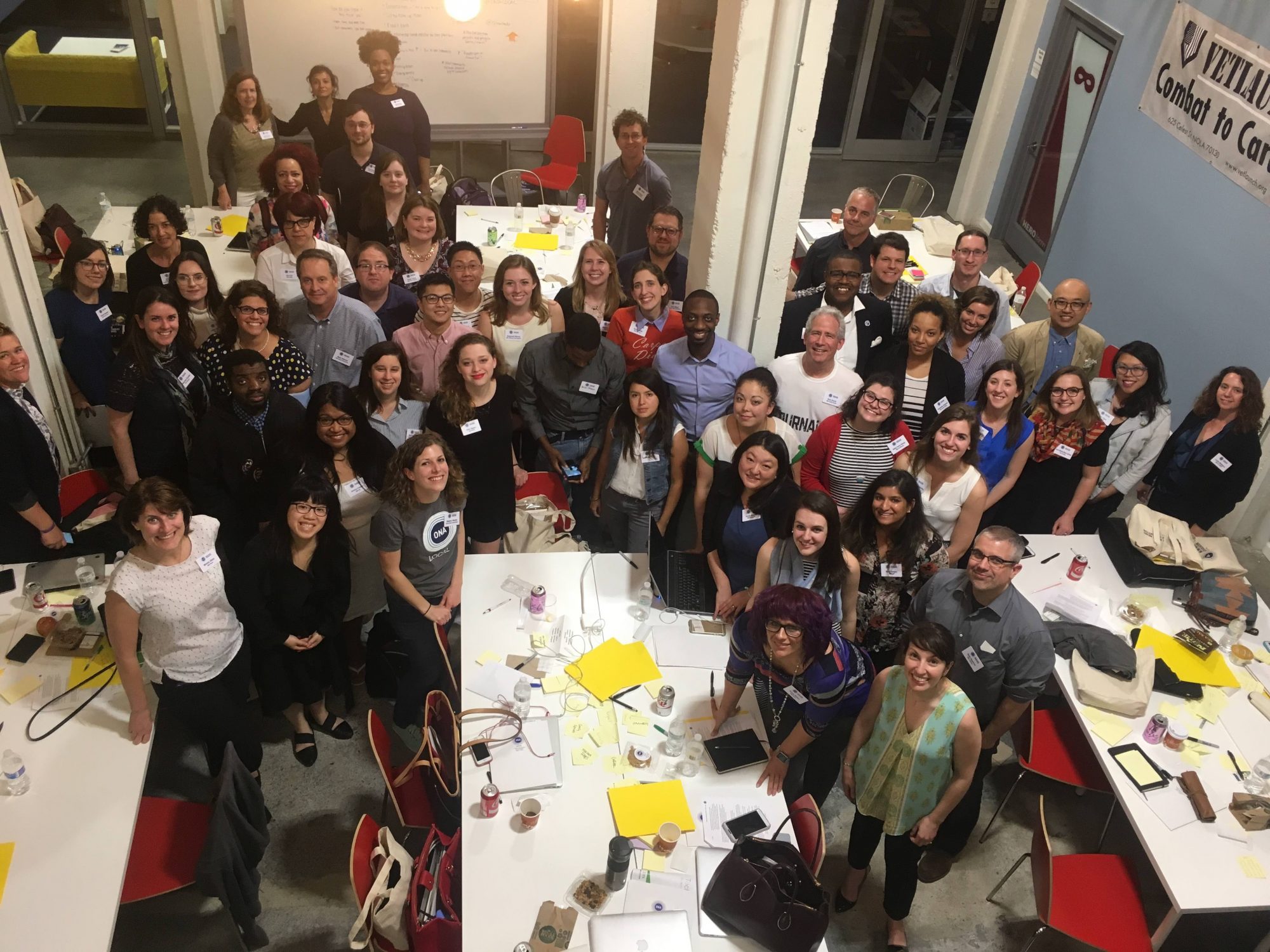In 2016, ONA kicked off a strategic plan to better understand the needs of local journalism communities in cities, regions and college campuses across the country. We’ve added 17 new communities to the ONA Local network, rebooted several dormant groups and experimented a lot along the way.
We often say ONA Local programs are the beating heart of ONA, and that’s because we believe innovation comes from bringing practitioners together often to learn from each other. With that in mind, we hosted 60 local journalism community leaders April 1 at our first-ever ONA Local Leadership Summit in New Orleans. The conversation focused on key elements of community leadership, including goal setting, driving local innovation, partnerships, programming and stewarding trust in media.
Below, we’ve compiled lessons learned during the past year of expanding the ONA Local program and from the experts who spoke at the Leadership Summit. We’ve also added the next steps you can take to build your own community.
This is the approach we’re currently using in building healthy communities of practice for journalism innovation. If you have something to add, I’d love to hear from you!
Step One: Set goals to match community needs
Each community has different needs. Large or siloed communities may need opportunities for structured networking and peer-to-peer learning, and others may be hungry for skills training workshops. Your goals should match what your community needs.
With the Coral Project’s Sydette Harry leading the discussion, our Local leaders defined community health with four elements:
- A shared purpose that members understand well (check out ONA Local’s manifesto for an example)
- Consistent gatherings, celebrations and opportunities to have fun
- Inclusivity and diversity, where members bring different perspectives to the table
- Systems to listen to, understand and support the needs of members
Consider how you’re meeting the needs of people who have diverse backgrounds, experiences, race/ethnicities, ages, gender identities, sexual orientation and more. Solicit feedback regularly and organize the feedback in a way that’s actionable. Think about ways to make space for positivity and recognition of excellent work.
Step Two: Identify leaders and clearly define their roles
WLRN’s Teresa Frontado talked about building a team to drive innovation in legacy news environments. The first thing to keep in mind, she said, is not to go it alone: “Innovation is a group activity. Communicate it again and again.” She walked participants through an exercise to map out their networks and locate allies.

Students from ONA @ UGA mapped out their network during Teresa Frontado’s presentation at the ONA Local Leadership Summit. (Photo by Charlotte Norsworthy)
Leadership is key for new ONA Local groups. We’re typically looking for four roles: logistics coordinators, communicators, advocates and team leads to manage the big picture — and our community often includes hybrids who can do more than one role and takes turns. (If you want to learn more about the structures our groups use, check out the tips we share with new leaders.)
- Look around within and outside your organization. Think about other professional organizations, partners, researchers and academics, audience groups and more. Who’s primed to join your team? Draw them out and note what they bring to the table. Then, identify your main strength as a leader.
- Think of three things you want to tackle in the next six months. Whose skills do you need to make them happen?
- Talk to each person one-on-one to find out what motivates them. Give them a specific role that fits with their motivations and skills. I can recommend a leadership recruitment tactic that’s cribbed from community organizing practice that I use to bring people into the right roles.
Step Three: Build diverse relationships
Several of the aspects of healthy communities we outlined together depend on strong community partnerships. We encourage ONA Local groups to build local partnerships to bring in new expertise, community members and networks.
In New Orleans, we talked about relationships from several angles:
- ONA Head of Strategic Partnerships Jessica Strelitz advised on partnering like a journalist: Figure out the best ways to communicate with each individual. Listen more than you talk. Tell your story clearly. Do your research and have the right information ready. Don’t forget to follow up.
- ONA LA’s Connie Ho outlined lessons from organizing meetups with other local journalism organizations. Partnerships usually involved providing a meetup venue, co-planning or volunteer support on the day of. She recommended listing all the related organizations in your area and working with them to determine how you can help each other.
- Heather Bryant studies effective newsroom collaborations as a John S. Knight Fellow at Stanford University, and she outlined many ways journalism organizations can collaborate together, from content sharing to an intricate hub model for projects like Documenting Hate or the Panama Papers.
Check out the slides from Jessica, Connie and Heather’s partnerships playbook talk.
Then, we held a series of conversations about building trusting relationships as stewards of trust in media, led by Nikole Hannah-Jones, Eve Abrams, Rebekah Monson and Julia Kumari-Drapkin. Key themes included humility, care and rigor in choosing words, not ending a relationship once the story does, framing the story around what people say rather than seeking sources to confirm a theory and collaborating with communities without a story as the end goal. (Check out write-ups on these talks from Lexi Belcufine, Michelle Baruchman and Melissa DiPento for more details.)
Step Four: Gather your community for impact
Once you have the people you need on board, your community’s going to need opportunities to connect with each other. ONA Head of Programs and Events Trevor Knoblich outlined three elements that contribute to impactful events:
Space. What kind of space will serve your event’s goals? Flexible furniture arrangements are good for small working groups. Bars may be suited to events focused on mingling.
Hospitality. If people feel lost or uncomfortable, it doesn’t matter how good your programming is. What can you do to make people feel safe, welcome and able to navigate the space? Will they be hungry or thirsty, and can you alleviate that by providing refreshments?
Programming. Events can accomplish one of three goals:
- Networking. Happy hour mixers are great and easy to organize, but think about mixing it up for those who may not be comfortable around alcohol. More ideas: ice cream socials, sports events, morning coffee mixers, tours of newsrooms or j-schools, trivia nights, hiking, karaoke or movie screenings.
- Inspirational. A big-name speaker or a fireside chat model where two speakers have a conversation work well. Panels have to be very well-executed to work well, so don’t use them as your go-to. If you do decide to do them, they should be representative of diverse perspectives and willing to engage in debate, guided by a skilled moderator.
- Sharing best practices. A “10 Tips” presentation on social media, product management or video, an under-the-hood look at a unique project, professional development or career building tips and other actionable advice is often popular.
We find ONA Local groups tend to achieve momentum with a goal of once-a-month meetups. Feel free to borrow our event worksheet to map each of these elements.
Got more ideas to add? Drop me a note. And if you want to start an ONA Local community where you live, here’s your next move.

